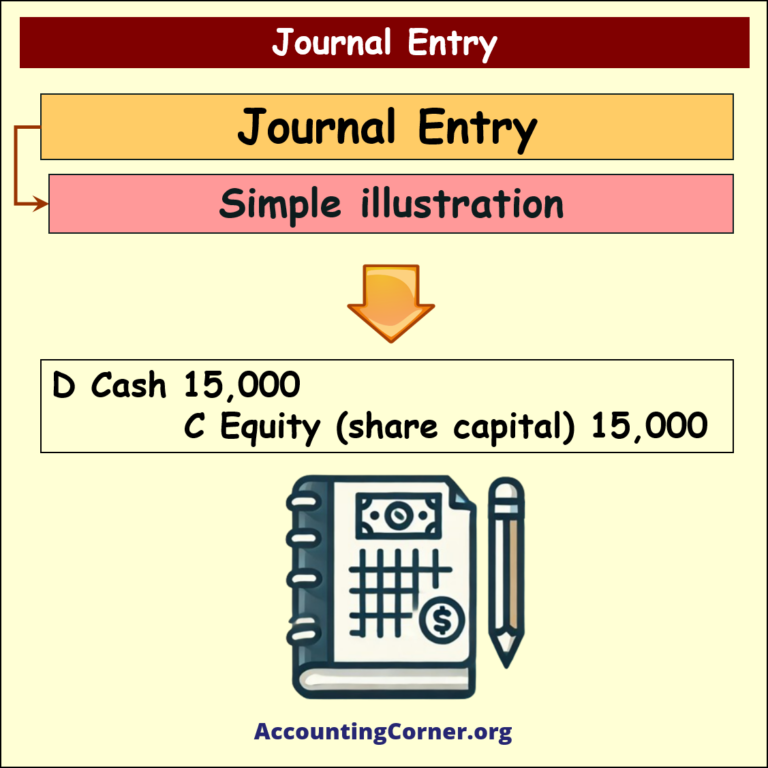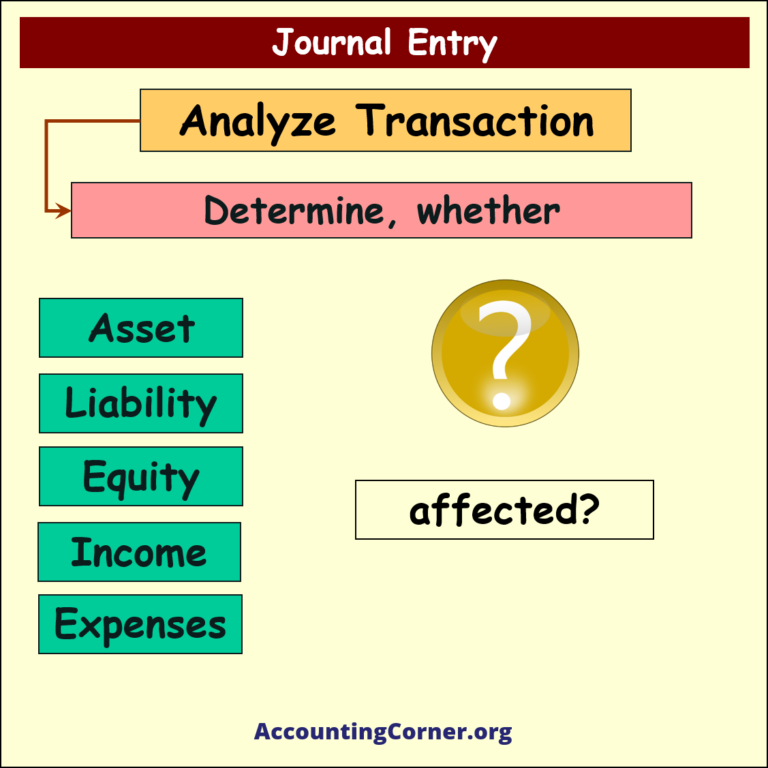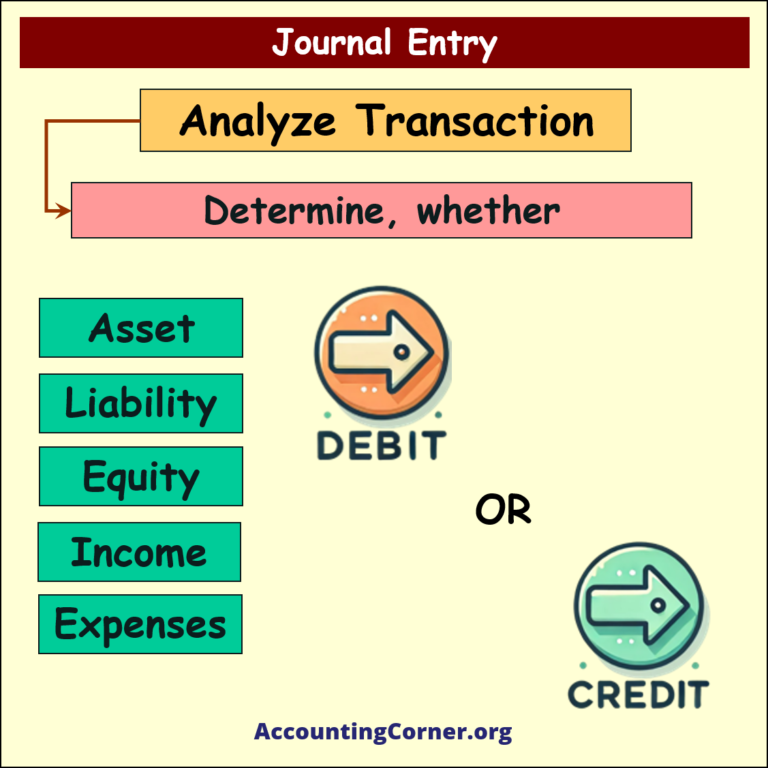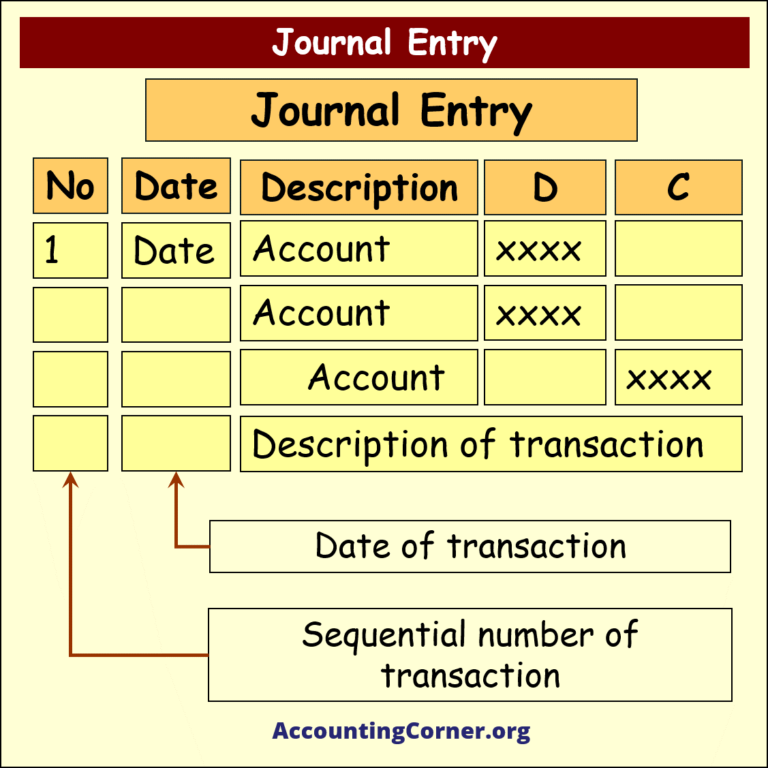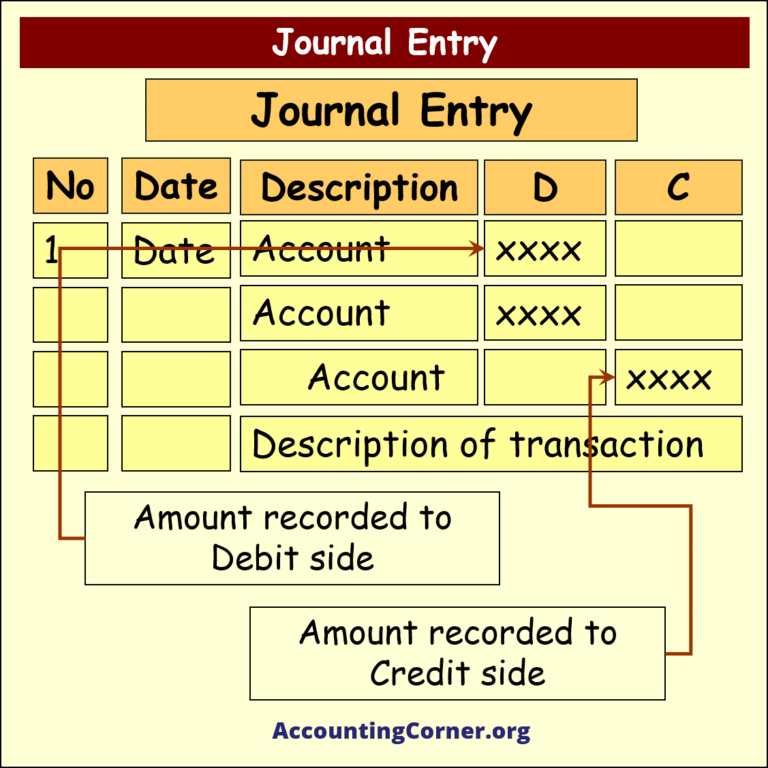A journal entry is a record of a financial transaction in the accounting system. It is the first step in the accounting process. Each journal entry consists of at least one debit and one credit, and the total of the debits must equal the total of the credits.
Importance of Journal Entry:
- Recording Transactions: Journal entries provide a record of all financial transactions of a business.
- Ensuring Accuracy: Recording all financial transactions through journal entries helps in ensuring that the financial statements of a company are accurate.
- Track Financial Activities: Helps in tracking the financial activities of a business.
- Legal Requirement: Maintaining a record of all financial transactions is a legal requirement in many jurisdictions.
Types of Journal Entries:
- Simple Journal Entry: It involves only two accounts, one account is debited, and another account is credited.
- Compound Journal Entry: It involves more than two accounts. For example, when multiple accounts are affected by a business transaction, it is recorded as a compound journal entry.
Examples of Journal Entry:
- Purchase of Equipment: Suppose a business buys equipment worth $5,000 on credit. The journal entry for this transaction will be:Equipment (Debit) $5,000 Accounts Payable (Credit) $5,000
- Sale of Goods: Suppose a business sells goods worth $10,000 for cash. The journal entry for this transaction will be:Cash (Debit) $10,000 Sales (Credit) $10,000
Issues and Limitations of Journal Entry:
- Manual Errors: Journal entries are often recorded manually, and this can lead to errors. Even small mistakes can have a significant impact on the financial statements of a company.
- Time Consuming: Recording journal entries for all transactions can be time-consuming, especially for large businesses with numerous transactions.
- Complexity: Some transactions can be very complex and may require a deep understanding of accounting principles to record accurately.
- Fraud: There is a potential for fraud or manipulation in recording journal entries. For example, an employee with access to the accounting system could record fictitious transactions or manipulate existing entries.
Journal Entry – Visuals
Journal Entry- Video
The Most Popular Accounting & Finance Topics:
- Balance Sheet
- Balance Sheet Example
- Classified Balance Sheet
- Balance Sheet Template
- Income Statement
- Income Statement Example
- Multi Step Income Statement
- Income Statement Format
- Common Size Income Statement
- Income Statement Template
- Cash Flow Statement
- Cash Flow Statement Example
- Cash Flow Statement Template
- Discounted Cash Flow
- Free Cash Flow
- Accounting Equation
- Accounting Cycle
- Accounting Principles
- Retained Earnings Statement
- Retained Earnings
- Retained Earnings Formula
- Financial Analysis
- Current Ratio Formula
- Acid Test Ratio Formula
- Cash Ratio Formula
- Debt to Income Ratio
- Debt to Equity Ratio
- Debt Ratio
- Asset Turnover Ratio
- Inventory Turnover Ratio
- Mortgage Calculator
- Mortgage Rates
- Reverse Mortgage
- Mortgage Amortization Calculator
- Gross Revenue
- Semi Monthly Meaning
- Financial Statements
- Petty Cash
- General Ledger
- Allocation Definition
- Accounts Receivable
- Impairment
- Going Concern
- Trial Balance
- Accounts Payable
- Pro Forma Meaning
- FIFO
- LIFO
- Cost of Goods Sold
- How to void a check?
- Voided Check
- Depreciation
- Face Value
- Contribution Margin Ratio
- YTD Meaning
- Accrual Accounting
- What is Gross Income?
- Net Income
- What is accounting?
- Quick Ratio
- What is an invoice?
- Prudent Definition
- Prudence Definition
- Double Entry Accounting
- Gross Profit
- Gross Profit Formula
- What is an asset?
- Gross Margin Formula
- Gross Margin
- Disbursement
- Reconciliation Definition
- Deferred Revenue
- Leverage Ratio
- Collateral Definition
- Work in Progress
- EBIT Meaning
- FOB Meaning
- Return on Assets – ROA Formula
- Marginal Cost Formula
- Marginal Revenue Formula
- Proceeds
- In Transit Meaning
- Inherent Definition
- FOB Shipping Point
- WACC Formula
- What is a Guarantor?
- Tangible Meaning
- Profit and Loss Statement Template
- Revenue Vs Profit
- FTE Meaning
- Cash Book
- Accrued Income
- Bearer Bonds
- Credit Note Meaning
- EBITA meaning
- Fictitious Assets
- Preference Shares
- Wear and Tear Meaning
- Cancelled Cheque
- Cost Sheet Format
- Provision Definition
- EBITDA Meaning
- Covenant Definition
- FICA Meaning
- Ledger Definition
- Allowance for Doubtful Accounts
- T Account / T Accounts
- Contra Account
- NOPAT Formula
- Monetary Value
- Salvage Value
- Times Interest Earned Ratio
- Intermediate Accounting
- Mortgage Rate Chart
- Opportunity Cost
- Total Asset Turnover
- Sunk Cost
- Housing Interest Rates Chart
- Additional Paid In Capital
- Obsolescence
- What is Revenue?
- What Does Per Diem Mean?
- Unearned Revenue
- Accrued Expenses
- Earnings Per Share
- Consignee
- Accumulated Depreciation
- Leashold Improvements
- Operating Margin
- Notes Payable
- Current Assets
- Liabilities
- Controller Job Description
- Define Leverage
- Journal Entry
- Productivity Definition
- Capital Expenditures
- Check Register
- What is Liquidity?
- Variable Cost
- Variable Expenses
- Cash Receipts
- Gross Profit Ratio
- Net Sales
- Return on Sales
- Fixed Expenses
- Straight Line Depreciation
- Working Capital Ratio
- Fixed Cost
- Contingent Liabilities
- Marketable Securities
- Remittance Advice
- Extrapolation Definition
- Gross Sales
- Days Sales Oustanding
- Residual Value
- Accrued Interest
- Fixed Charge Coverage Ratio
- Prime Cost
- Perpetual Inventory System
- Vouching
Return from Journal Entry to AccountingCorner.org home



